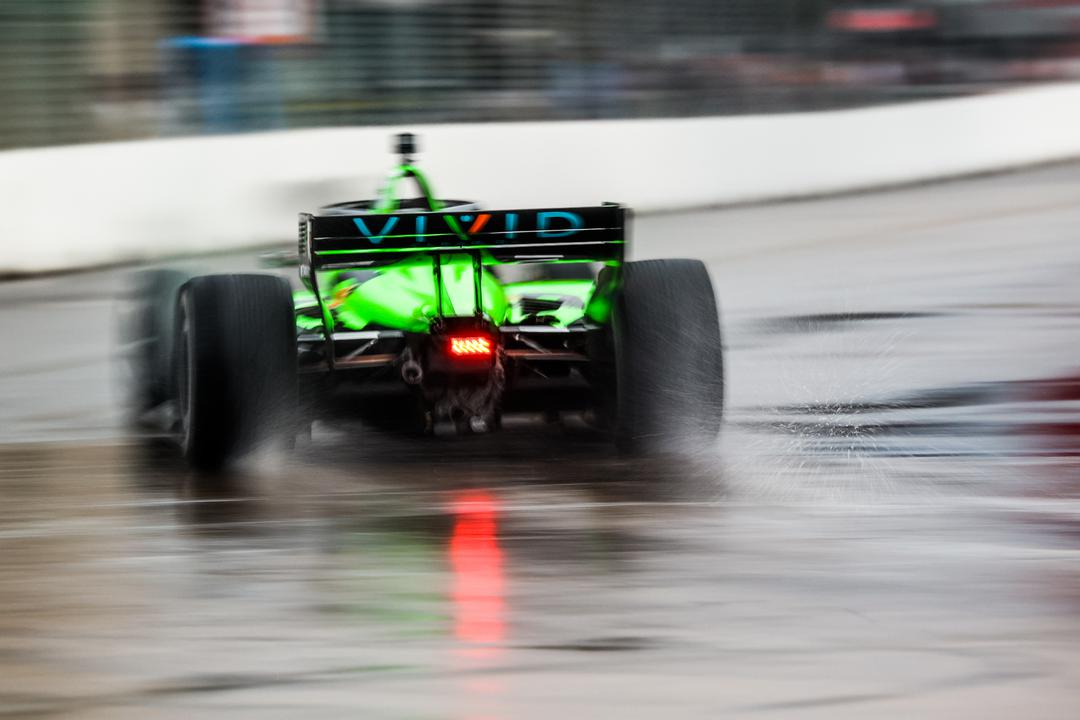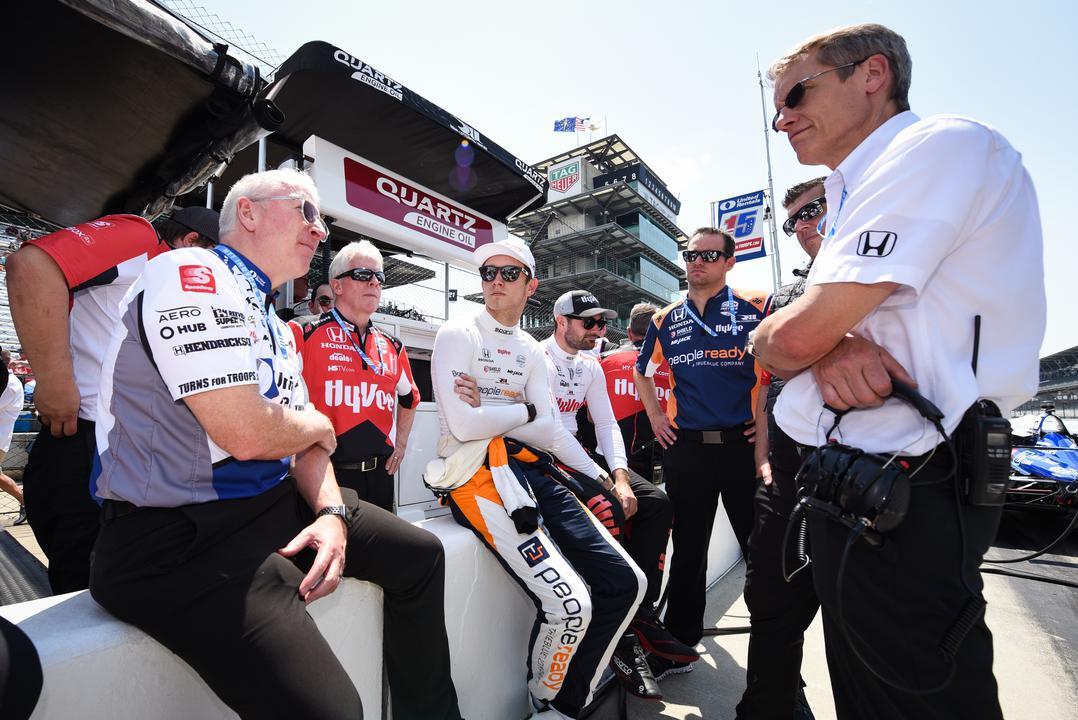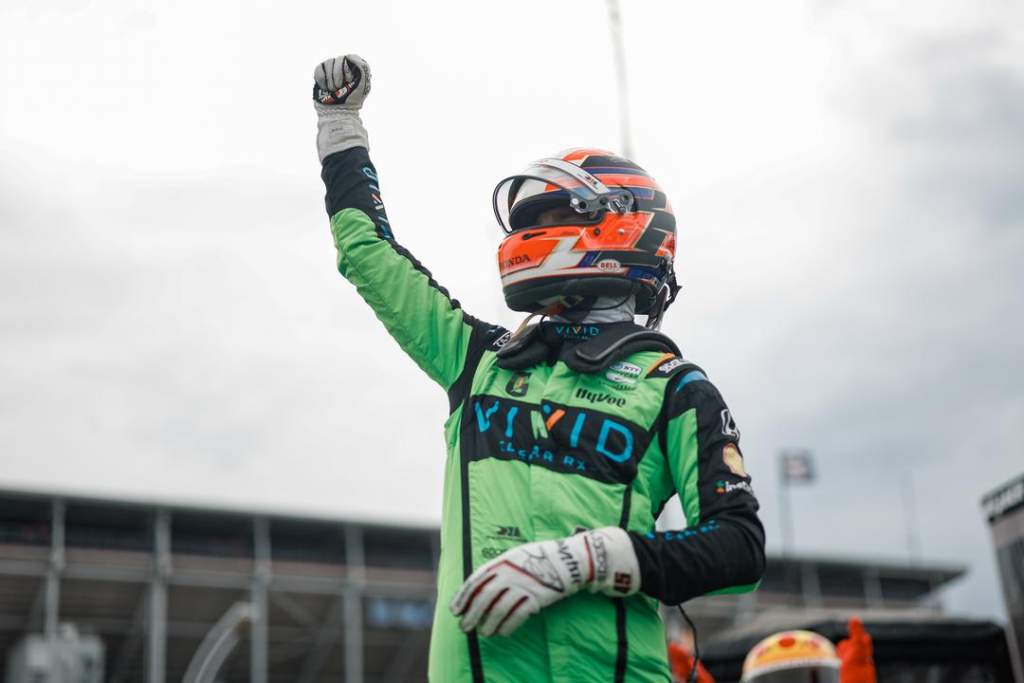Heading into a dry Toronto IndyCar qualifying session, even Christian Lundgaard didn’t envisage he would be in a fight to start on the front row, but his wet weather prowess earned him a second pole of the year.
“When I woke up this morning, I was just hoping we were going to make improvements from 17th yesterday!” said Rahal Letterman Lanigan driver Lundgaard after the session.
“To end the day like this I didn’t quite expect, but RLL has just been smashing it, quite honestly.
“I know the past few race weekends we’ve been moving forward, and we’ve been making progress.
“Let’s just see what the rest of the season brings. It starts well now, so we’ll keep moving.”
Tough conditions? No match for @lundgaardoff.#INDYCAR // #IndyTO pic.twitter.com/PvCErQNFJc
— NTT INDYCAR SERIES (@IndyCar) July 15, 2023
Coming from 17th in practice to pole in qualifying is not necessarily such a surprise, because it’s symbolic of one of Lundgaard’s best traits. The first trait his engineer Ben Siegel mentions when you ask where the former Alpine Formula 1 junior has been most impressive since his IndyCar switch.
“One of the things about Christian is he has a really positive attitude,” Siegel – who got his break working with Rubens Barrichello at KV Racing in 2012 and then moved to Ed Carpenter Racing before joining RLL for 2022 – tells The Race.
“Even when things aren’t really going well, he recovers from that very quickly, and always has kind of a positive outlook on the way things are going. So when he gets in the car, he’s giving it everything that he’s got every time and obviously, it works out!”
Lundgaard has been incredibly impressive in 2023. He’s the series’ fourth-best driver on road courses – despite having 13 cars from the top teams to compete against before you even consider RLL’s midfield rivals – and has comfortably been the team’s best scorer despite only being in his sophomore year.
He’s repeatedly shown better ability to adapt to Rahal’s fluctuating car performance and deliver top performances, Toronto being the latest in a long line of achievements marking him out as a future race winner and champion.

You don’t get as many wet weather specialists at the elite level anymore because everyone has to be good in the wet to be able to compete – probably in the same way big servers and serve and volley specialists don’t really exist in tennis anymore because you have to be an all-rounder to win.
But it’s clear Lundgaard has a knack for finding performance in not only wet conditions, but especially changing conditions, which is an art in itself.
“When we grew up in mini-karts in Denmark we don’t have wet tyres, and as we all know, we develop our skills when we are a very young age,” he said.
“I was driving around on the slicks in the wet, and I’ve just always been fast in the wet. Especially in go-karts. I guess it comes from there.”
Lundgaard had been one of the wise drivers to take a second set of wet tyres in Q2 – the Firestone wets become saturated and you can go faster with a fresh set even on a drying track – and then did a banker in the Fast Six on the wets before switching to softs on the drying track.
He credited his team for the call, saying his side of the RLL pit “made it happen today, I don’t think I did, I think they did”.
McLaren’s Pato O’Ward also took a second set of wets but then went early in the Fast Six, and you can see just how treacherous the track was from his early onboard below.
Mr. Fast Hands was SHOWING OUT in the Firestone Fast Six 🤯 pic.twitter.com/RQ48pPRaIv
— NTT INDYCAR SERIES (@IndyCar) July 15, 2023
Watching how sketchy Lundgaard’s lap is below, you might tend to disagree with him that it was more the team that was responsible for pole as there’s no doubt he made the difference on the fast lap at least, beating another driver with known wet weather prowess, Scott McLaughlin, by over three tenths of a second.
In the dry at the last race at Mid-Ohio, pole was decided by 0.0432s, so three tenths feels like a lifetime.
Grab a pen and paper ✍️@lundgaardoff and @TonyKanaan are breaking down the pole lap.#INDYCAR // #IndyTO pic.twitter.com/my8zFV0hcj
— NTT INDYCAR SERIES (@IndyCar) July 15, 2023
Lundgaard admitted afterwards he didn’t want to switch to the slicks because the last sector was so wet, and you can see that by how active his hands are starting the lap in the video above.
“You’re tiptoeing around,” he explains.
“You’re just trying to find grip, and obviously here it’s high risk, high reward. But my previous lap before that, when I was told this is your last lap, I was already finding grip.
“Basically, the only thing I did was just go more from the wet kind of line into the dry line, and there was just grip there.
“We all knew how wet Turn 8 was. There was a big puddle there. When I came down there on that last lap, I was just praying, praying, not to brake too late.
“Then it was about trying to figure out where the wet patches were and just managing the grip.”
Where the Toronto street track might differ from a more traditional wet weather lap in Europe is there are a host of surface changes from different ages of asphalt – freshly laid in the last sector, one of the reasons it was so slippery – to various types and ages of concrete, all reacting differently and drying more slowly or more quickly.
For that reason it’s the last place you’d want rain.
But thanks to his attitude, his adaptability – which is repeatedly mentioned in the paddock as being one of Lundgaard’s best qualities as when his team-mates have struggled he’s often found that next step – and belief in the team around him, he’s hard to write off in any scenario in his current form.

“It’s definitely impressive,” says Siegel (in the blue T-shirt in the picture above) of the run Lundgaard is on – sixth, fourth, seventh and fourth on road courses while Rahal’s oval and street course form is proving more elusive.
“It’s exciting as well, because it’s only our second season together. His second season in IndyCar, my second season as a race engineer working with him as well.
“If you look back at last year, there’s plenty of races last year on road courses, and street courses on their own, where we could have qualified a little bit better, if we’d have been in that group, we might have transferred [to the next qualifying segment], this and that happened in the race, something happened, and we fell back because a caution came out at the wrong time, all that kind of stuff.

“So there were several instances where we didn’t quite get the result that we had the potential for.
“And whereas on road courses in particular this year, I think we’re getting the results that we have potential for.
“We have potential for even more than that. So we’re certainly showing progress and the whole is sure.
“And it’s not without help from the whole team, from Graham’s [Rahal] group and from Jack’s [Harvey] group as well.”
So bringing it back to today, can Lundgaard fight for the win in the dry?
“I do think we will be fast,” said Lundgaard.
“I just don’t think we’ll be the fastest car. I don’t think we’ve shown that pace throughout the weekend.
“I hope the improvements that we did make from practice two into qualifying and the changes that we made will pay off.”
Lundgaard is only 10th in the points despite his road course form, with Rahal having a great amount of difficulty on ovals and its street course performance being enigmatic at best.

The team followed a similar pattern last year and it was Toronto – via a test just before at Sebring – that provided some answers and began a much better spell of form, and the pole here reflects its 2023 step forwards.
The pole and the performance this year specifically has given Lundgaard and Siegel confidence they can continue to improve.
“There are tracks where we’ve certainly made improvements year over year from last year to this year, there’s obviously places where we need to make even bigger improvements from year to year, which we’re working on,” says Siegel.
“But we’ve shown that we have the potential to find those issues, hopefully solve those problems and continue to build on them and learn from them.
“So that as things evolve and change in years to come that we can respond to those appropriately. But like I said it, it comes down to not just one car. It’s the whole team.”







